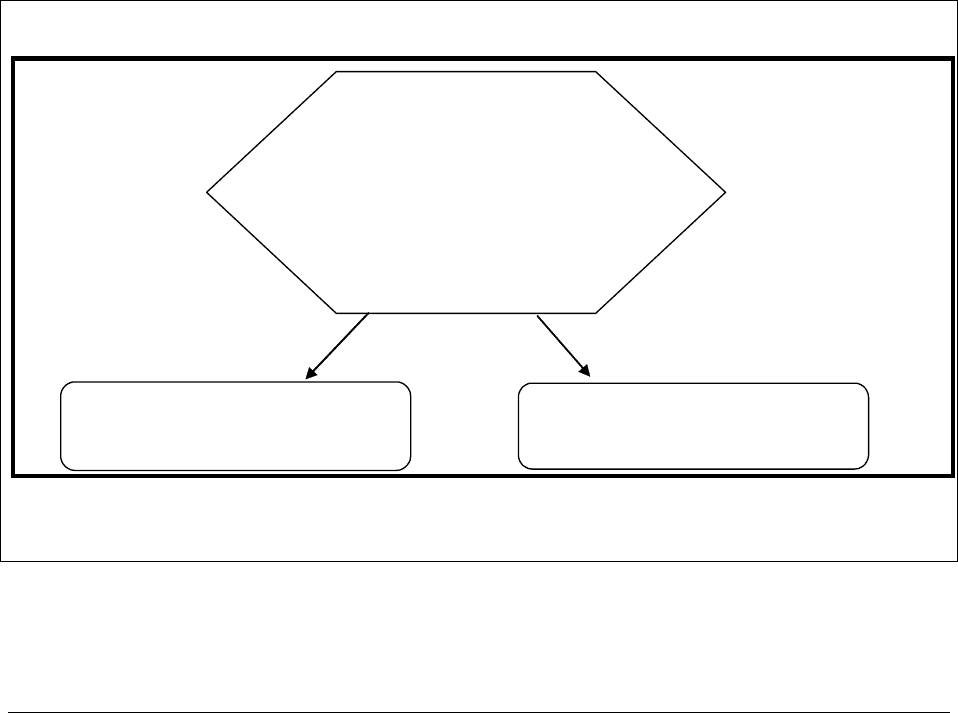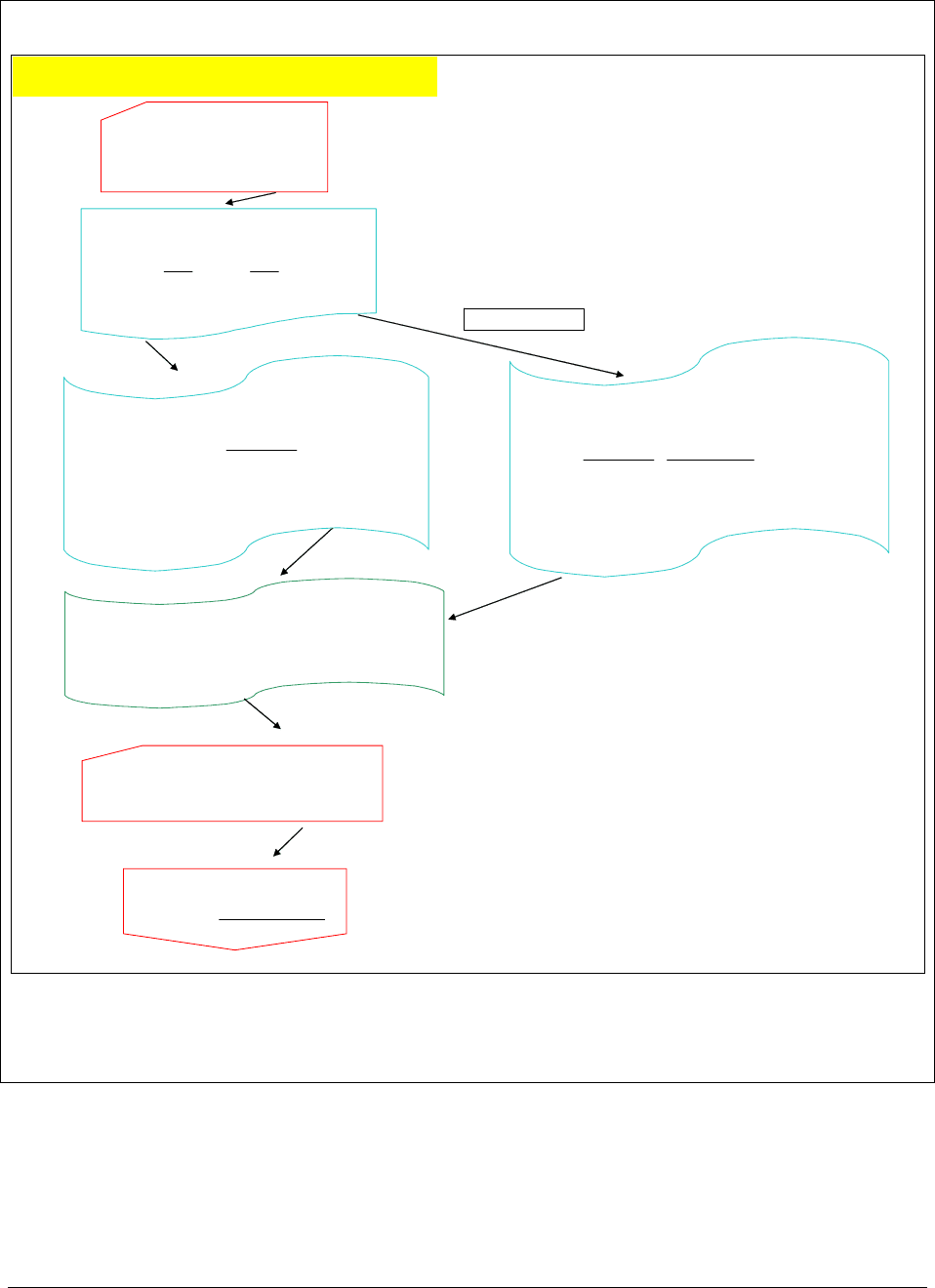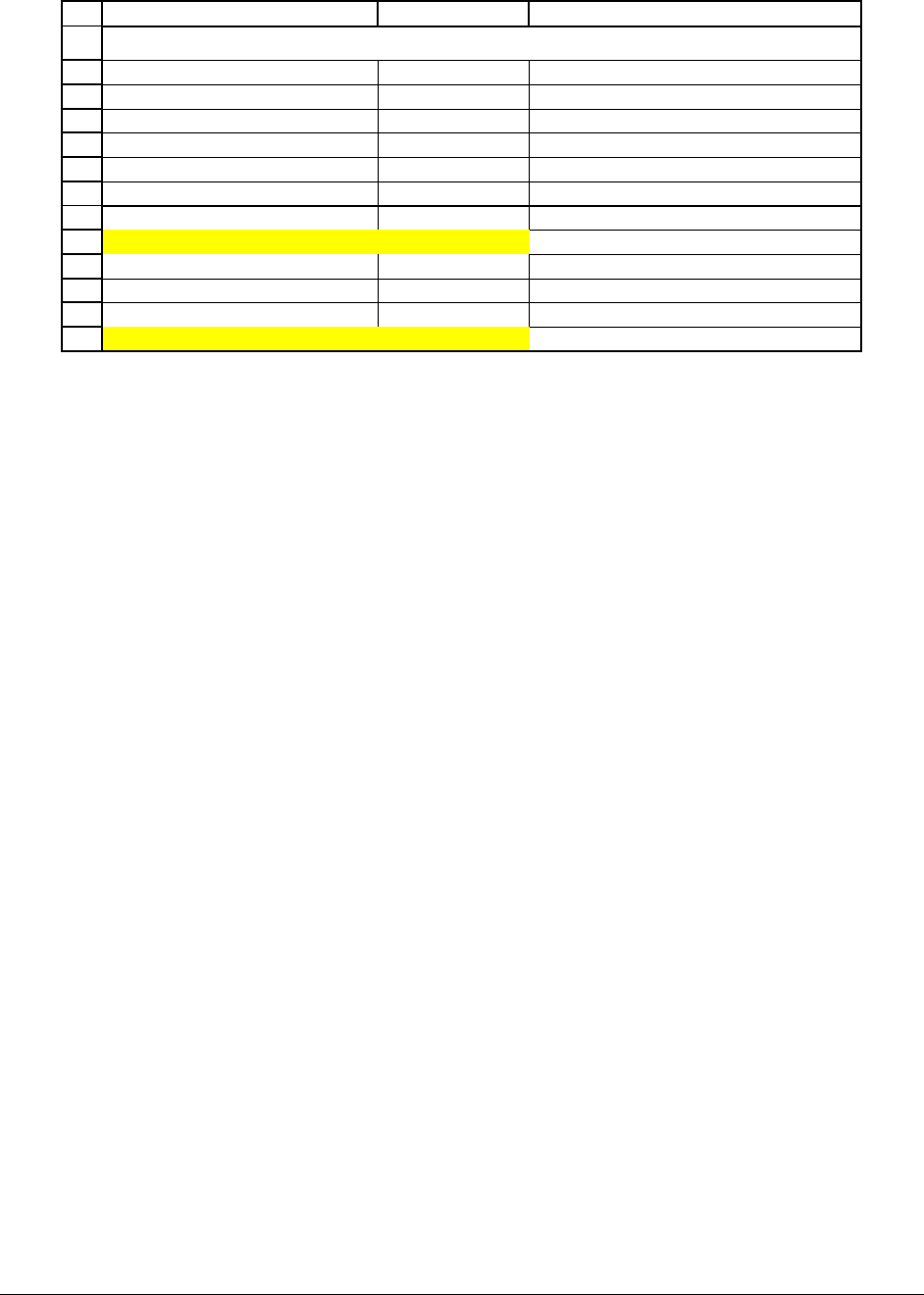Principles of Finance with Excel (Основы финансов c Excel)
Подождите немного. Документ загружается.


PFE Chapter 19, Stock valuation page 2
Overview
In Chapter 17 we discussed the valuation of bonds. This chapter deals with the valuation
of stocks. Whereas the valuation of bonds is a relatively straightforward matter of computing
yields to maturity, the valuation of stocks is much more difficult. The difficulty lies both in the
greater uncertainty about the cash flows which need to be discounted in order to arrive at a stock
valuation and in the computation of the correct discount rate.
In this chapter we discuss four basic approaches to stock valuation:
• Valuation method 1, the efficient markets approach. In its simplest form the
efficient markets approach states that the current stock price is correct. A somewhat
more sophisticated use of the efficient markets approach to stock valuation is that a
stock’s value is the sum of the values of its components. We explore the implications
of these statements in Section 19.1.
• Valuation method 2, discounting the future free cash flows (FCF). Sometimes
called the discounted cash flow (DCF) approach to valuation, this method values the
firm’s debt and its equity together as the present value of the firm’s future FCFs. The
discount rate used is the weighted average cost of capital (WACC). This method is
the valuation approach favored by most finance academics. We discuss this approach
in Section 19.2 and discuss the computation of the WACC in Sections 19.5 and 19.6.
In this chapter we do not discuss the concept or the computation of the free cash
flow—this was done previously in chapters 6-7.
• Valuation method 3, discounting the future equity payouts. A firm’s shares can
also be valued by discounting the stream of anticipated equity payouts at an

PFE Chapter 19, Stock valuation page 3
appropriate cost of equity r
E
. The concept of equity payout (the sum of a firm’s total
dividends plus its stock repurchases) was previously discussed in Chapter 5.
• Valuation method 4, multiples. Finally we can value a firm’s shares by a
comparative valuation based on multiples. This very common method involves ratios
such as the price-earnings (P/E) ratio, EBITDA multiples, and more industry specific
multiples such as value per square foot of store space or value per subscriber.
With the exception of the multiple method 4, almost all of the material in this chapter is
also discussed elsewhere in this book. For example, the efficient markets approach to valuation
is also discussed in chapter 13, and the Gordon dividend model (which values a firm’s equity by
discounting its anticipated dividend stream) is also discussed in chapters 5 and 7. WACC
computations are to be found in Chapters 5 and 13. The purpose of this chapter is to bring
together these dispersed materials into a (hopefully coherent) whole.
Finance concepts discussed in this chapter
• Discounted cash flows, free cash flows (FCF)
• Cost of capital, cost of equity, cost of debt, weighted average cost of capital (WACC)
• Equity premium
• Beta, equity beta, asset beta
• Two-stage growth models
Excel functions used
• Sum, NPV, If
• Data table

PFE Chapter 19, Stock valuation page 4
19.1. Valuation method 1: The current market price of a stock is the correct
price (the efficient markets approach)
The simplest stock valuation is based on the efficient markets approach (chapter 13).
This approach says that the current market price of a stock is the correct price. In other words:
The market has already done the difficult job stock valuation, and it’s done this correctly,
incorporating all of the relevant information There’s a lot of evidence for this approach, as you
saw in chapter 13.
This valuation method is very simple to apply:
• Question: “IBM looks a bit expensive to me—it’s price has been going up for the last 3
months. What do you think: Is IBM’s stock price currently underpriced or overpriced?”
• Answer: “At Podunk U., we learned that markets with a lot of trading are in general
efficient, meaning that the current market price incorporates all the readily-available
information about IBM. So—I don’t think IBM is either underpriced or overpriced. It’s
actually correctly priced.”
Here’s another example of the use of this approach:
• Question: “I’ve been thinking of buying IBM, but I’ve have been putting it off. The
price has gone up lately, and I’m going to wait until it comes down a bit. It seems a bit
high to me right now.” What do you think?
• Answer: “At Podunk U. we would call you a contrarian . You believe that if the price of
a stock has gone up, it will go back down (and the opposite). But this technical approach
(see chapter 13) to stock valuation doesn’t seem to work very well. So if you want to buy

PFE Chapter 19, Stock valuation page 5
IBM, go ahead and do so now. There’s nothing in the price runup of the last couple of
months which indicates that there will now be a price rundown.”
Some more sophisticated efficient markets methods
Efficient markets valuations don’t always have to be as simplistic as the above examples.
In chapter 13 we looked at additivity, a fundamental tenet of efficient markets. The principle of
additivity says that the value of a basket of goods or financial assets should equal the sum of the
values of the components. Additivity can often be used to value stocks.
Here’s a very simple example: ABC Holding Corp., a publicly-traded company, owns
shares in two publicly traded companies. Besides owning these subsidiaries, ABC does little
else.
ABC HOLDING COMPANY
Owns:
60% of XYZ Widgets
50% of QRM Smidgets
ABC has 30,000 shares outstanding
XYZ Widgets
Market value of shares: $1,000,000
QRM Smidgets
Market value of shares: $875,000
Figure 19.1. Ownership structure of ABC Holding Company

PFE Chapter 19, Stock valuation page 6
What should be the value of a share of ABC Holding? The obvious way to do this is in
the following spreadsheet, which computes the share value of ABC to be $34.58:
1
2
3
4
5
6
7
8
9
ABCDE
Number of ABC shares 30,000
ABC owns shares in
Percentage
of shares
owned by
ABC
Market
value
Market value
of ABC
holdings
in company
XYZ Widgets 60% 1,000,000 600,000 <-- =B5*C5
QRM Smidgets 50% 875,000 437,500 <-- =B6*C6
Total value of ABC holdings 1,037,500 <-- =D6+D5
Per share value of ABC Holdings 34.58 <-- =D7/B2
ABC HOLDING COMPANY
Notice what this model is and is not telling you:
• Is telling you: If the market values of XYZ and QRM are correct, then the market value
of ABC should be $34.58. The formula works out to be:
[
]
[
]
60%* 50% *
ABC share
X
YZ value QRM value
number of
price
ABC shares
+
=
•
Is not telling you: The formula tells you a relation between the 3 share prices. It tells
you if the share prices are relatively correct, but it does not tell you if they are absolutely
correct. Example: After doing much work and research and applying the methods of the
previous Section, you come to the conclusion that, while the market valuation of QRM is
correct, the market value of XYZ ought to $1,600,000. Then you would conclude that
the share price of ABC ought to be $46.58.

PFE Chapter 19, Stock valuation page 7
1
2
3
4
5
6
7
8
9
ABCDE
Number of ABC shares 30,000
ABC owns shares in
Percentage
of shares
owned by
ABC
Market
value
Market value
of ABC
holdings
in company
XYZ Widgets 60% 1,600,000 960,000 <-- =B5*C5
QRM Smidgets 50% 875,000 437,500 <-- =B6*C6
Total value of ABC holdings 1,397,500 <-- =D6+D5
Per share value of ABC Holdings 46.58 <-- =D7/B2
ABC HOLDING COMPANY
Note that if ABC has some of its own overheads and if it doesn’t always pass through all
the dividends of its subsidiaries, its market price will be lower than $34.58, since the market
price of ABC will reflect not only the cost of the shares of its subsidiaries, but also its own
overheads. This looks a lot like the closed-end fund valuation problem discussed in chapter 13.
19.2. Valuation method 2: The price of a share is the discounted value of the
future anticipated free cash flows
Valuation method 1 of the previous section says that there is nothing to be gained by
second-guessing market valuations. In many cases, however, the finance expert (you!) will want
to do a basic valuation of a company and derive the value of a share from the discounted value of
the future anticipated free cash flows (FCF). This method, often called the discounted cash flow
(DCF) method of valuation, was discussed and illustrated in chapter 7. Figure 19.2 reminds you
of the definition of FCF and figure 19.3 gives a flow diagram of the FCF valuation method.

PFE Chapter 19, Stock valuation page 8
Defining the Free Cash Flow
Profit after taxes This is the basic measure of the profitability of the
business, but it is an accounting measure that includes
financing flows (such as interest), as well as non-cash
expenses such as depreciation. Profit after taxes does not
account for either changes in the firm’s working capital or
purchases of new fixed assets, both of which can be
important cash drains on the firm.
+ Depreciation This noncash expense is added back to the profit after tax.
+ after-tax interest payments (net) FCF is an attempt to measure the cash produced by the
business activity of the firm. To neutralize the effect of
interest payments on the firm’s profits, we:
• Add back the after-tax cost of interest on debt
(after-tax since interest payments are tax-
deductible),
•
Subtract out the after-tax interest payments on cash
and marketable securities.
- Increase in current assets When the firm’s sales increase, more investment is needed
in inventories, accounts receivable, etc. This increase in
current assets is not an expense for tax purposes (and is
therefore ignored in the profit after taxes), but it is a cash
drain on the company.
+ Increase in current liabilities An increase in the sales often causes an increase in
financing related to sales (such as accounts payable or taxes
payable). This increase in current liabilities—when related
to sales—provides cash to the firm. Since it is directly
related to sales, we include this cash in the free cash flow
calculations.
- Increase in fixed assets at cost An increase in fixed assets (the long-term productive assets
of the company) is a use of cash, which reduces the firm’s
free cash flow.
FCF = sum of the above
Figure 19.2. Defining the free cash flow. We have previously discussed FCFs and their use in
valuation in Chapters 5 - 7.

PFE Chapter 19, Stock valuation page 9
CALCULATING THE FIRM'S SHARE VALUE
FROM THE FREE CASH FLOWS AND WACC
Predict firm's future free cash flows (FCF).
In Chapters 8 & 9 we did this using a pro
forma model.
Compute the firm's weighted average cost of capital
(WACC):
Discount some of the free cash flows and the terminal value to get the
enterprise value of the firm:
The terminal value is what the firm will be worth on date N. We've
multiplied by (1+WACC)
0.5
because cash flows are assumed to occur in
mid
y
ea
r
.
Subtract debt value from firm value to get total equity
value:
Divide equity value by the number of
shares to derive the share value:
Total equity value
Share value
Number of shares
=
()()
()
0.5
1
*1
11
N
t
tN
t
Enterprise value
FCF
Terminal Value
WACC
WACC WACC
=
⎡⎤
=+ +
⎢⎥
++
⎢⎥
⎣⎦
∑
A
dd initial cash balances to enterprise value to get total value of the firm's
assets:
Equity value Total asset value Debt value=−
()
1
EDC
ED
WACC r r T
ED ED
=+−
++
ED
C
Where r is the cost of equity, r is the
cost of debt, and T is the firm's tax rate
Total asset value Enterprise value Initial cash=+
Discount the all future free cash flows to get the enterprise value of the
firm:
We've multiplied by (1+WACC)
0.5
because cash flows are assumed to
occur in mid
y
ea
r
.
()
()
0.5
1
*1
1
t
t
t
FCF
Enterprise value WACC
WACC
∞
=
⎡⎤
=+
⎢⎥
+
⎢⎥
⎣⎦
∑
Alternatively
Figure 19.3: Flow diagram for a FCF valuation

PFE Chapter 19, Stock valuation page 10
Valuation 2: Example 1—a basic example
It is 31 December 2003 and you are trying to value Arnold Corp, which finished 2003
with a free cash flow of $2 million. The company has debt of $10 million and cash balances of
$1 million You estimate the following financial parameters for the company:
•
The future anticipated growth rate of the FCF is 8%
•
The WACC of Arnold is 15%
You can now estimate the value of Arnold:
•
The enterprise value of Arnold is the present value of future anticipated FCFs discounted
at the WACC:
()
()
0.5
1
This factor "corrects"
for the fact that FCFs occur
This is the PV
throughout the year.
formula, assuming that
FCFs occur at year-end
*1
1
t
t
t
FCF
Enterprise value WACC
WACC
FCF
∞
=
↑
↑
⎡⎤
=+
⎢⎥
+
⎢⎥
⎣⎦
=
∑
()
()
()
()
()
0.5
2003
1
Future FCFs are expected
to grow at rate .
0.5
2003
This formula was
given in Chapter ???
1
*1
1
1
*1
t
t
t
g
g
WACC
WACC
FCF g
WACC
WACC g
∞
=
↑
↑
⎡⎤
+
+
⎢⎥
+
⎢⎥
⎣⎦
⎡⎤
+
=+
⎢⎥
−
⎣⎦
∑
Doing the computations in an Excel spreadsheet shows that the enterprise value of Arnold
Corp. is $33,090,599 and that the estimated per-share value is $24.09:

PFE Chapter 19, Stock valuation page 11
1
2
3
4
5
6
7
8
9
10
11
12
13
AB C
2003 FCF (base year) 2,000,000
Future FCF growth rate 8%
WACC 15%
End-2003 debt 10,000,000
End-2003 cash 1,000,000
Number of shares outstanding 1,000,000
Enterprise value 33,090,599 <-- =B2*(1+B3)/(B4-B3)*(1+B4)^0.5
Add cash 1,000,000 <-- =B6
Subtract debt -10,000,000 <-- =-B5
Value of equity 24,090,599 <-- =SUM(B9:B11)
Share value 24.09 <-- =B12/B7
VALUING ARNOLD CORP
Valuation method 2: Example 2—two FCF growth rates
In the valuation of Arnold Corp. in the previous subsection we assumed a FCF growth
rate which is unchanging over the future. This assumption is often suitable for a mature, stable
company, but it may not be appropriate for a company that is currently experiencing very high
growth rates. In this subsection we show how to perform a FCF valuation of a company for
which we assume two FCF growth rates—a high FCF growth rate for a number of years followed
by a subsequent lower FCF growth rate.
Xanthum Corp. has just finished its 2003 financial year. The company’s 2003 FCF was
$1,000,000. Xanthum has been growing very fast; you anticipate that for the coming 5 years the
FCF growth rate will be 35%. After this time, you anticipate that the FCF growth will slow to
10% per year, because the market for Xanthum’s products will become mature.
Xanthum has 3,000,000 shares outstanding and a WACC of 20%. It currently has
$500,000 of cash on hand which is not needed for operations; Xanthum also has $3,000,000 of
debt. To value the company, we apply the same valuation scheme as before, but this time we use
the two FCF growth rates:
